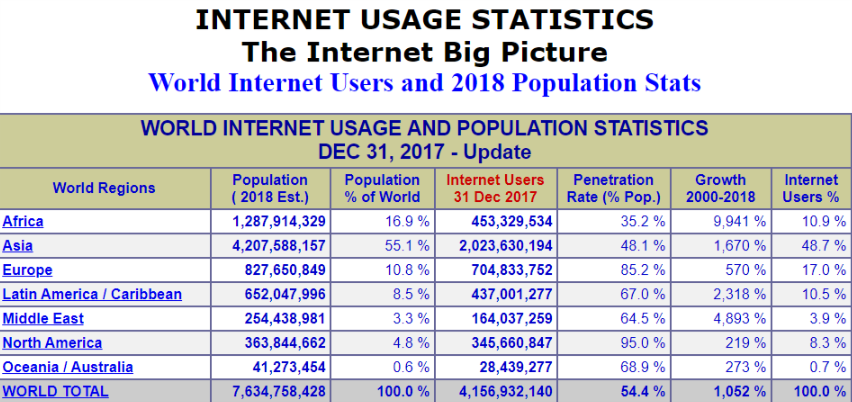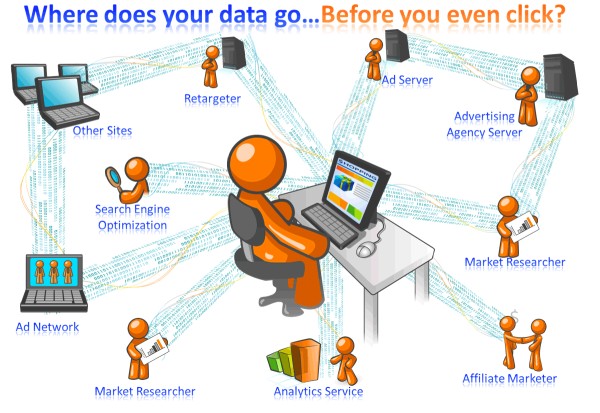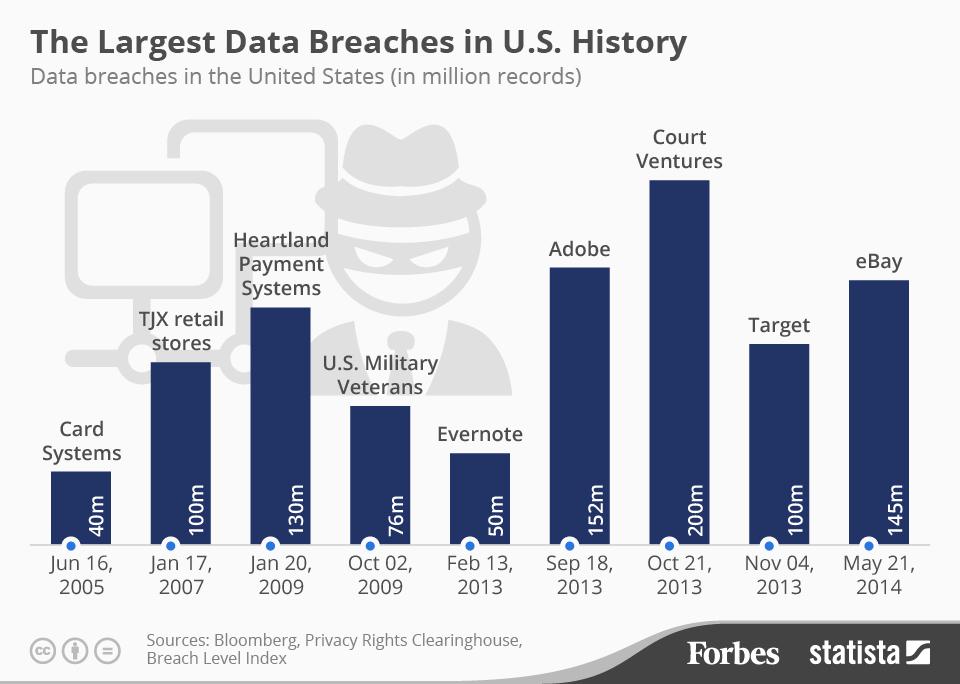Oftentimes, you read about blockchains being a part of the Web 3.0 evolution, a new phrase that’s being used to describe the transition our beloved internet is currently undergoing. But as the “3.0” indicates, the internet is evolving from something into something else.
In this article, we take a look at the transition of the internet from its humble beginnings to getting taken over by tech giants, and how blockchain technology has an important role to play in the evolution of the Web. We then focus on the main web-based industries – blockchain projects in particular – that have set out to disrupt the status quo and lead the Web to its 3.0 stage.
From Web 1.0 to 3.0
First, there was the Web 1.0, better known as the World Wide Web. Most of us remember those early days when you had to dial up the internet and sit through the noisy process. Websites were static, took forever to load, and a page like MySpace wasn’t even possible yet.
As more people started using the internet and began to recognize its potential, a new global infrastructure to support the World Wide Web emerged. The internet became faster and allowed for heavier applications and websites, giving rise to the era of social media, YouTube, Amazon, Airbnb, Netflix, and Bitcoin.
Today, people across the globe can share information and entertainment, shop, get answers to all their questions, and interact with each other, all on the Web 2.0. According to estimates, 54.4% of the global population has access to the internet.

However, the Web 2.0 has several limitations.
Data is the new oil. Everything we do online is potential data, and internet-based companies are collecting more and more of it. Our personal data is so valuable because it provides free information that businesses can use to market themselves and potentially reach over half of the world. Your data is fast becoming one of the most valuable assets you have, and you don’t even own it.
Mega enterprises such as Facebook and Google became Facebook and Google by harvesting nearly immeasurable amounts of data from their users. For these web conglomerates, users have become their product and businesses their customers – and they know virtually everything about their product.
Today, the main business model of nearly every large internet company is based on the collection and sale of its users’ data.

On top of that, nearly all organizations using the internet collect data, and not all of them with the end goal of trading it. For example, governments, banks, and credit card companies own an enormous amount of data with no intentions of selling it. There is one big issue with this, however: it’s extremely hard to store data securely.

Click here for a full overview of the biggest data breaches in history.
Additionally, it goes without saying that we cannot trust each other on the internet. How do I know that my distant cousin from Zimbabwe is really my distant cousin, and that they’re actually sending me my royal inheritance? For the identification of parties and verification of transactions, we still need intermediaries on the Web 2.0 to collect and store our data, and here we go again.
The Web 3.0
The dominance of the internet giants has ruined the dream of full freedom of information and opinion that once accompanied the emergence of the internet. And just as things started to get out of hand, with Facebook’s data being used for voter manipulation, Google storing much more data than Facebook, Uber getting hacked, among many, many other issues, a solution presented itself in the form of blockchain technology and the Web 3.0.
Blockchain technology sparked the Web 3.0 transition by making several things possible that weren’t before. Thanks to the technology’s decentralized nature, there are no central parties controlling entire platforms. Each network member partly controls a particular blockchain, and together all network members decide the on the future of the platform.
Data is stored across the network, meaning there are no central servers anymore – and thus no central points of entry – making data storage vastly more secure. Hackers would have to hack an entire blockchain, which cannot be done with our existing technology.
Decentralized data storage also means no more selling, manipulating, and surveilling of user data by central parties. All user data that is collected via blockchain is fully encrypted, and the rules of conduct on what to do with this data are transparently written in the blockchain’s programming.
Moreover, blockchain platforms allow users to retain ownership of their data, rather than hand it over to be hoarded by all-too-powerful tech giants. We can keep it private, or maybe share it with advertisers in return for micropayments. Advertisers have always been paying millions to get their products known to the public, and they will keep doing so – just directly to the users rather than to third parties like Facebook.
Because all transactions are stored on a decentralized, shared ledger, blockchain is inherently transparent. The entire community can see transactions appearing on the blockchain, check wallets, and access the programming of the blockchain, without knowing who owns what and who is who.
Everybody is included in the Web 3.0 because of the permissionless nature of most blockchains. This means that no one needs to get permission to use it. Anyone can open up a Bitcoin wallet, make a Steemit account, and start using a dapp on the Ethereum blockchain.
Projects Leading the Web 3.0 Evolution
The transition from Web 2.0 to 3.0 will likely happen smoothly, without being noticed by the masses. The Web 3.0 applications will look and feel the same as the 2.0 applications we use today, but the back-end will be designed completely differently. Siacoin will just be seen as a cheaper Cloud storage alternative, Steemit as a social media platform on which people can directly exchange content for value, and Augur as a fun way to bet on future events.
As soon as the first killer application of blockchain emerges, we’ll likely see the beginning of the global exodus from 2.0 to 3.0. Developers will have a clear example of how to balance blockchain technology with the user friendliness of the Web 2.0, and slowly everything will transition.
In the following segment, we will look at various segments and companies on the Web 2.0 and see which blockchain projects are getting ready to disrupt the incumbents and lead to the 3.0 evolution.
Digital Payments
The majority of our online payments are conducted through the use of intermediaries in the form of credit card companies (VISA, MasterCard), banks, and PayPal. These organizations have the responsibility to ensure the funds actually move hands, keep all the private information secure, and prevent any form of theft.
For all this, these organizations incur massive overhead costs. Keeping data centers and capital secure while also making profits results in hefty transaction fees for users of these organizations’ services.
Cryptocurrencies meant for transactions solve a lot of these security concerns and dramatically decrease the cost, due to their lack of third party involvement. Bitcoin, Litecoin, Monero, and Zcash are all examples of secure digital currencies that can be quickly and cheaply sent around the globe. All users need is access to the internet and a device to keep their wallet on. For merchants, companies like Bitpay help them integrate cryptocurrencies into their payment system.
But coming back to the concept of a smooth transition, it is likely that most people will use the Web 3.0 without knowing it, thus without actually using cryptocurrencies. Using PayPal, your bank account, or a credit card is much easier than creating accounts and trading on crypto exchanges, keeping your private keys secure, and keeping a cool head in the face of market volatility.
Stellar Lumens is a blockchain company that is committed to disrupting the digital payments industry by connecting banks, payment systems, and end-users. The platform allows for quick, reliable, and low cost global transactions. These transactions don’t necessarily have to be in crypto, but can be any fiat currency. Stellar Lumens users won’t even realize that cryptocurrencies were involved in the process, even though on the back-end these transactions run on Stellar’s native cryptocurrency, XLM.
Another project devoted to transactions is the Request Network, often mentioned as a serious competitor of PayPal. The platform allows anyone anywhere to make payment requests. These payments are conducted on the blockchain, eliminating the need for intermediary parties and making the payments fully secured.
The team behind the Request Network understands that most people do not want to have to deal with cryptocurrencies yet, and they have implemented mechanisms that allow payment requests to work with every global currency. By leveraging blockchain technology, the Request Network has a serious competitive advantage, because transactions on the platform can be done for far lower fees than with any other industry player.
Social Media
Even though we keep using the popular social media platforms en masse, most users realize something is broken in their business models. Facebook has dominated headlines with their recent data scandal, but other cases like Instagram’s and Twitter’s manipulative mechanisms, as well as their completely broken advertisement model, are becoming more clear to the public.
The key issue here is that the data collected by these online giants is highly sensitive due to its personal nature, and it can result in gross invasions of privacy. You don’t want your friends going through your entire browser history, let alone some distant online conglomerate who not only tracks your data, but also makes entire profiles of you based on your data, which it then sells.
And yet, cats are so damn cute, and we still want our phone to entertain us and help us keep in touch with distant friends. We can’t abandon social media; we just need a much better model for running it.
The Steem blockchain, and its best known social media application Steemit, lead the way in this segment of the Web 3.0 evolution. The Steemit platform has employed its own economic model in which creators of content are curated by their peers. Quality content gets upvoted, and each upvote represents a microtransaction of Steem, the platform’s native currency.
The platform is ad-free, no user data is centrally stored or sold, there is no censorship of content by a central organization, and users are awarded cryptocurrency for being active on the platform and improving the quality of its content. Steemit is the leading application on the Steem blockchain, but there are more applications like DTube, a YouTube alternative, and dMania, a decentralized 9GAG.
The success of Steemit has given rise to some healthy competition. Narrative (a beautiful website) is a NEO-based competitor. It employs a similar dynamic to Steemit, but there is more governance by users who can own topic niches. Narrative also dedicates a part of its website to brands which can make themselves known to the platform through quality content.
There is also Sapien, a democratic and social news platform; Indorse, an Ethereum-based alternative to LinkedIn; and ONG.social that focuses more on privacy – and these are just a few of a growing number of blockchain-based social media platforms.
Entertainment
Besides social media, we turn to companies such as YouTube, Netflix, and Spotify for most of our daily entertainment. However, these mega companies have taken their markets by storm, leaving little room for competition. This has turned out to be a good thing for the companies, as they can collect and sell massive amounts of data, but a bad thing for the creators of content.
Users publish their content on these platforms in hopes of having a shot at making a name for themselves, but receive very little in return for the value they create. Additionally, there has been a lot of critique on YouTube’s questionable censorship and monetization policy, Spotify’s payments to the musicians on its platform, and Netflix’s unmatched power over the movie and series industry.
In this segment of the Web-based industry, there are plenty of blockchain initiatives willing to disrupt it. The music industry has been haunted by bad deals for artists and exploitation by labels, and musicians are taking the initiative to change this. Musician Imogen Heap, for example, started her own blockchain project Mycelia to make the distribution of value in the music industry more fair, especially when it comes to the creators of music. Voise is a similar platform which has set out to create a decentralized platform for music, directly connecting artists with their fans.
Flixxo is an Ethereum-based application willing to dethrone YouTube, and, as mentioned earlier, DTube is the Steem-based blockchain competitor. Another serious candidate is Videocoin, a startup that managed to attract $35 million during its ICO, which is creating a decentralized platform for all kinds of video applications, ranging from video content to live streams to news channels.
Storage
Cloud storage is one of the great solutions that the Web 2.0 introduced to the world. Individuals and companies alike could suddenly cheaply store far more and larger files than their own hardware allowed for, and these files could be accessed from anywhere.
However, even though cloud storage has major advantages, the fact that all stored data is in the hands of a centralized party is a problem. This is because it has a single point of failure, no matter how well-secured the cloud storage centers are. The data is held by one entity, and so compromising this entity is all it would take to get your hands on huge amounts of sensitive data.
So let’s decentralize cloud storage too. In terms of market cap, Siacoin is the biggest company in this segment. This startup allows people with excess storage capacity to rent it out in exchange for cryptocurrency payments. Siacoin has proved to be much cheaper than Amazon and Google’s storage services, and based on their road map, we can expect some serious growth.
Another startup decentralizing storage is Filecoin. This company managed to attract $257 million in ICO funding, making it one of the biggest ICOs ever. Filecoin’s decentralized network reliably stores files at hypercompetitive prices. A third big player in this part of the Web 3.0 evolution is Storj, a comparable decentralized Cloud storage platform with low prices and high security, in which only the user has access to his or her data.
Online Advertisements
Our current online advertisement model is broken. This is not only demonstrated by companies such as Facebook and YouTube, but also by most websites you visit. Running a professional website is serious business, which requires investments and paying costs, but as soon as a website starts asking for subscriptions, most people turn to other sources. By far the most employed practice is allowing advertisements to run on your website, and the more traffic you generate the more advertisers are willing to pay.
However, people have become selectively blind when it comes to advertisements. What’s more, most people aren’t even viewing the ads, given the number of adblock downloads. Even the company profiting the most from ads, Google, has an adblock extension on its native browser.
What if people could directly show their appreciation for website content, get paid by advertisers for watching their ads, and websites could stay profitable based on the contributions of its visitors?
There are several blockchain startups working on this. The biggest project is Basic Attention Token. This Ethereum-based blockchain application has made it its mission to directly connect content creators, advertisers, and content consumers with each other without centralized organizations acting as intermediaries.
In order to do this, the company has created its very own browser, the Brave browser. Through this browser, users are able to pay microtransactions towards content they enjoyed, and advertisers can pay content consumers for their attention. All of this will be done anonymously.
Another company that is trying to change the online advertisement model is Oyster Pearls. This company is trying to create an engine through which content consumers can contribute GPU and CPU to websites they love, making those websites less dependent on advertisement. Moreover, it allows websites and content creators to store their data on a decentralized platform, which is ultimately cheaper and more secure.
Running the Internet
There is one larger project that is trying to decentralize the entire internet, called Substratum. Their platform makes it possible for anyone to contribute spare computing resources to a fully decentralized web which no authoritarian organization can censor or control.
For running a Substratum and thus keeping the decentraweb online, users are paid with Substratum’s native cryptocurrency. Users of this internet can see the hosted content in their regular browser without any intermediaries interfering with their experience, thus creating a completely neutral and censorship-resistant internet. Imagine what this can mean for people being oppressed by authoritarian governments!
Concluding Remarks
There are many more projects working to bring the Web 2.0 to its next evolutionary stage, but in this article we focused on projects that are leading the evolution to the Web 3.0.
Blockchain-based projects that aim to lead the Web 3.0 evolution are focused on smoothening the transition. Instead of forcing people to use entirely new systems, these projects are creating platforms that are similar to Web 2.0 solutions, but that leverage the benefits of blockchain technology.
First we need a smooth transition from the Web 2.0 to the Web 3.0, in order to introduce people to the benefits of blockchain technology without exposing them to the downsides that exist because of the technology’s infancy. Slowly but surely, people will start to get accustomed to the dynamics of the blockchain-based Web, and then more complex applications will be introduced.
The Web 3.0 promises to make the internet a fairer platform on which value is distributed to those who create it, a platform that promises to give the power back to those who deserve it – the users of the internet. However, it’s important to keep in mind that people had the same idea when the internet itself emerged. Those who developed the Web envisioned a future in which the whole world was connected, allowing for a free, global exchange of information and value.
This dream was slowly swallowed whole by behemoths who consolidated control of the internet, and who now store and sell all their users’ information. A censorship-free internet is an ideology of the past, but blockchain technology has given new life to this dream.
The Web 3.0 could transform the internet into what we wanted it to be in the first place: a global network in which each member can create value and be rewarded for it, without being treated as a product. Let’s see how far these blockchain startups can bring us to this ideal.
Related: 5 Blockchain Projects That Are Increasing Our Freedom
Download the Brave Browser.

